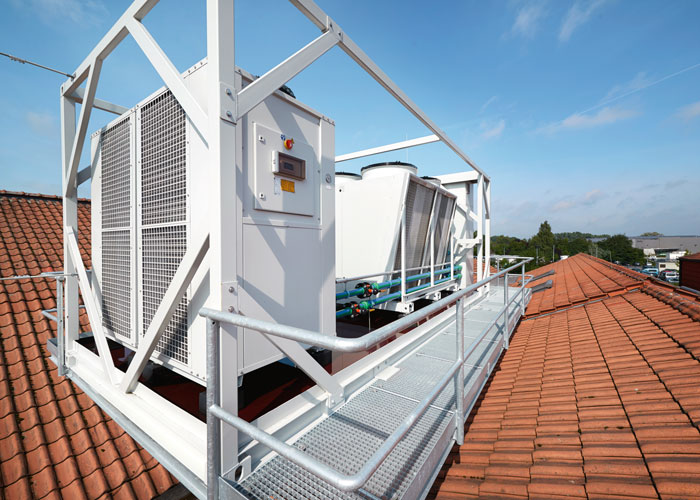Text Ulrich Sendler, Steffen Maltzan ––– Photography
How can I make my data centre more energy-efficient and cut electricity costs? Does adjusting the cooling parameters lead to significant savings? Many Rittal customers and partners are asking the company’s service staff these questions. A look at numerous cases in actual data centres shows that the solution is often more obvious and pays off faster than you might imagine. The main focus is on the IT infrastructure, especially the cooling system. And it’s clear that, although the cooling parameters are important, they don’t deliver significant savings on their own.
The German industry association Bitkom bases its approach on the international recommendations of ASHRAE (the American Society of Heating, Refrigerating and Air-Conditioning Engineers). For example, the thermal guidelines for Class A1 enterprise data centres permit server air intake temperatures ranging from 15 to 32 degrees Celsius and recommend values in the somewhat narrower range of 18 to 27 degrees.
Martin Dörrich, Head of the Product and Spare Parts Management service at Rittal, has put together a recommendation taking a genuine customer scenario as an example. As in many data centres, this customer’s server air intake and water inlet temperature parameters were set lower than necessary, at 18 and 13 degrees respectively. Cooling was exclusively via chillers, and these temperature settings meant their compressors were running for long periods throughout the year. Increasing the server air intake temperature by four degrees, to 22 degrees, and the water inlet temperature to 15 degrees initially delivered only small cost savings. “When this was combined with the additional use of an external free cooler, however, a significant saving in annual operating costs was achieved,” reveals Dörrich. “Taking into account the cost of investing in a free cooler, including materials and conversion work, this modernisation project paid for itself in just 1.7 years or so, not to mention reducing the carbon footprint and relieving the strain on the overburdened power grid,” he adds.
When combined with infrastructure modifications that can be implemented quickly, adjusting the parameters thus leads to a noticeable saving, while still ensuring compliance with the specified requirements and settings. When, or rather where, does using a free cooler produce results of this kind? Whenever the outdoor temperature is regularly lower than the water inlet temperature that has been set, the system is operating in free cooling mode and the compressors are switched off.
The example provided shows that the data centre’s geographical location and the typical temperatures there over the course of the year play a major role when it comes to saving energy during data centre operation. The cooler the location, the easier the saving is to achieve and the faster such infrastructure modifications pay for themselves. Different factors need to be considered in southern Europe or Africa to the ones that apply in a country such as Germany. Wherever the local climate is suitable, free cooling is an easy option that quickly pays off.

